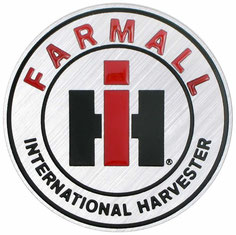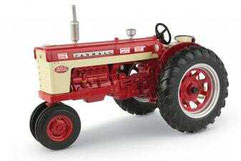
FARMALL Tractor Manuals PDF
History of Farmall Tractors
4 FARMALL Tractor Operator's Manuals PDF, Electric Wiring Diagrams presented higher on the page.
The first Farmall tractors three-wheeled, which made it possible to solve the problem of clearance while ensuring high maneuverability (the angle of rotation of one front wheel can reach values approaching 90 °, which reduces the minimum turning radius).
The clearance of the rear axle increased through the use of final drives.
The load on the front wheel reduced due to the use of a paired wheel.
The firstborn, Farmall Regular, produced in 1924-1932.
In the late 30s, IH released a new line of tractors, where there were also 3 sizes: C, H and M, where C is the least powerful version.
In the early 50s, modernized versions of these machines produced: Super C, Super H and Super M.
An example of a more modern machine that occupied a niche F-12 will be the French version of the Super C model.
For tractors produced at the IH plant in Saint-Dizier since 1950, the letter F was added to the index.
In addition to the main version - Super FC, Super FC-C, Super FC-D and Super FC-E versions produced, differing in the types of fuel used.
Accordingly, C worked on gasoline, D - on diesel fuel, and E - on "tractor fuel" that was not very clear.
Interestingly, diesel engines were used only on French tractors.
In the USA, such tractors not in demand.
The four-cylinder International Harvester C-123 engine had a displacement of 2.0 liters and produced 22 hp.
A 4-speed gearbox installed on the tractor, which made it possible to accelerate the tractor to 16.7 km / h.
The tractor made according to the frameless scheme. 98310 Super C tractors produced in the USA.
I didn’t find how many in France, but they produced there longer, until 1957, while in the USA since 1954 they launched a new, expanded line of tractors with digital indexes.
In addition to factories in the US, Germany and France, IH built tractors in Doncaster, England.
Today, the Farmall brand belongs to Case IH, and under this name they continue to produce tractors of two lines.


